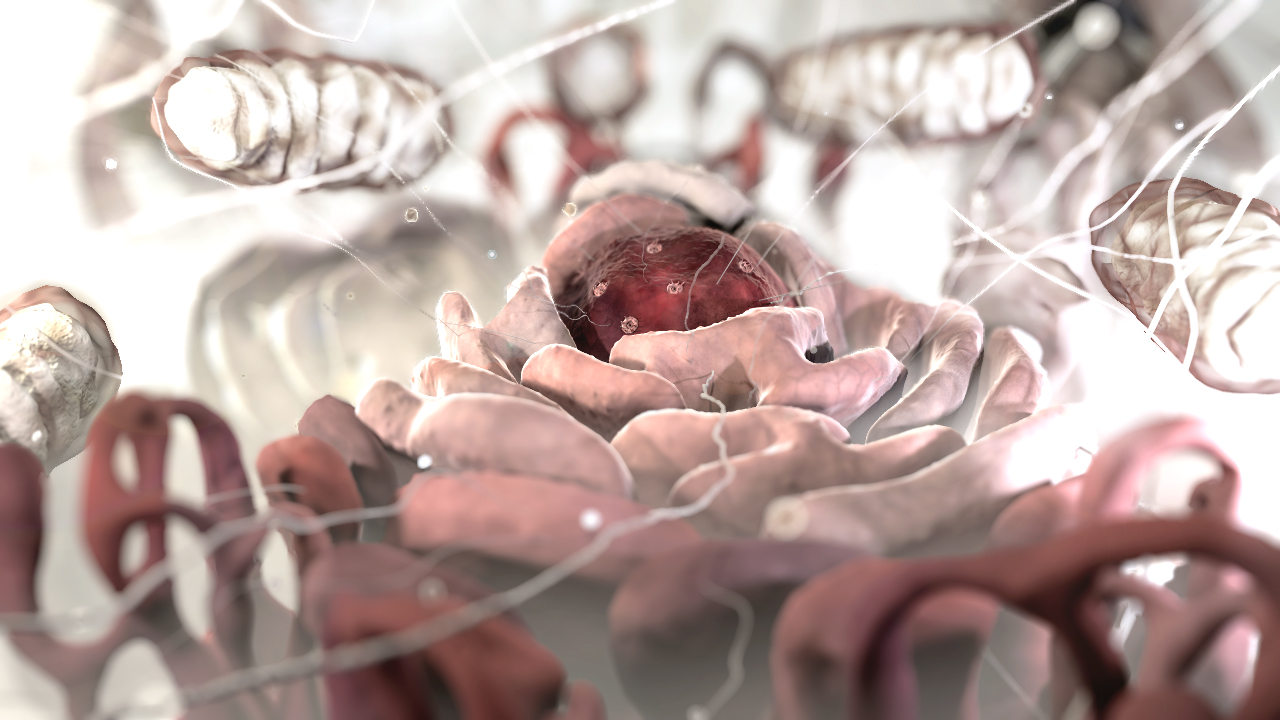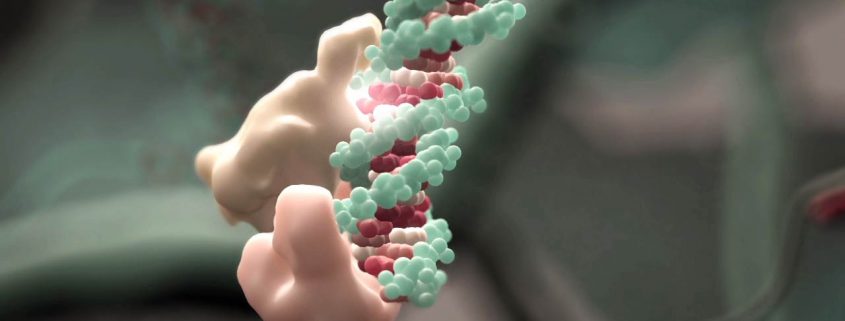Bringing science to life – 5 tips on how to create a scientific 3D animation
An animation is a powerful tool to communicate a message within a short time in an easy and memorable way. Here Katharina Petsche, media designer and molecular biologist from Vienna, gives her best advice on how to create a scientific 3D-animation
Animated videos have a high potential for science communication to make complex concepts understandable. They can come in a variety of styles, ranging from whiteboard animations to motion graphics.
When it comes to depicting molecular processes within the cell, nothing is more powerful and impressive than a 3D animation. With a 3D video you can not only tell engaging stories, but also visualize the invisible world of molecules with high accuracy. Whether you want to do it yourself or you hire somebody. Here are five tips that will help you produce a successful molecular 3D animation.
1. Define the target group and purpose
This might sound trivial but it’s the base that determines your storyline, your script and the overall style of the animation. You have to know who you are talking to in order to choose the appropriate language. Will you design it for scientists, for students, potential investors, for the general public or children? It is also important to clarify the purpose of your animation – do you want to educate, entertain or persuade your audience? Once you are clear about those questions you are able to write the script and find a style that fits best.
2. Put a lot of effort in the script
The average attention span can be very short, that’s why most explainer videos are not longer than two minutes. You have to convey your key message quickly, so use short sentences and simple words. Depending on the knowledge level of your audience you will have to provide different information to make people understand your content. Only give the information that is really important and cut the rest. Writing a short and simple script can be challenging and take a lot of time but it is the key to make an animation successful.
3. Tell a story
One great benefit of animations is that any topic can be transformed into an engaging story. For people without a scientific background stories can help providing context and showing the relevance of a research. Once your audience understands the connection to their own lives they will become interested and eager to learn more. Regardless of your target audience, stories evoke emotions and therefore will make facts and data memorable.
4. Simplify
Simplification is also important when it comes to the design and animation of your scenes. For example the cytoplasm of a cell is fully packed with molecules and filaments. In order to have free space to depict a molecular event you will have to show it as an empty space. Molecules and atoms are moved randomly through Brownian motion. It might be necessary to slow that down or leave it in order to focus on the main animation. It might also be necessary to find compromises in terms of scaling. Molecules are tiny compared to cell compartments like the nucleus. If you want to show everything in one frame you will have to resize things.
5. Make it beautiful
Molecular structures and objects within the cell are smaller than the wavelength of light. This gives you artistic liberty while designing the cellular landscape since you are not restricted in terms of colors, materials or lighting. A nice color palette not only gives the animation an appealing look but can also increase comprehension. You can use colors, textures, lights and shadows to draw the attention, distinguish different compartments and highlight parts of a process or a molecule. You can use transparent materials to show cross sections of objects and use depth of field to focus on things in the foreground. Depending on your target group and purpose you can choose a more accurate, realistic or a more cartoonish look. The challenge is to find the right balance between art and science.
Katharina’s show reel: http://www.katharinapetsche.com/animation-showreel/

- Claire Price of Crastina receives outreach award from Royal Society of Biology - October 25, 2020
- Agile Science student project at Brussels Engineering School ECAM: “We can’t wait to try it again!” - August 28, 2020
- Create an infographic in the Lifeology SciArt Infographic Challenge - June 16, 2020
- Adam Ruben – The scientist that teaches undergraduate students comedy - March 27, 2020
- Sam Gregson, Bad Boy of Science: “Comedy helps to bridge the gap” - March 10, 2020
- The Coolest Science Merchandise of 2019 - December 16, 2019
- Science Media Centre (UK) offers guide on dealing with online harassment in academia - November 26, 2019
- Agile project management taught to students and researchers at Karolinska Institutet - September 20, 2019
- Stefan Jansson: Improve your credibility! (Crastina Column, September 2019) - September 6, 2019
- The People’s Poet: Silke Kramprich, tech communicator - August 31, 2019





Nice post!